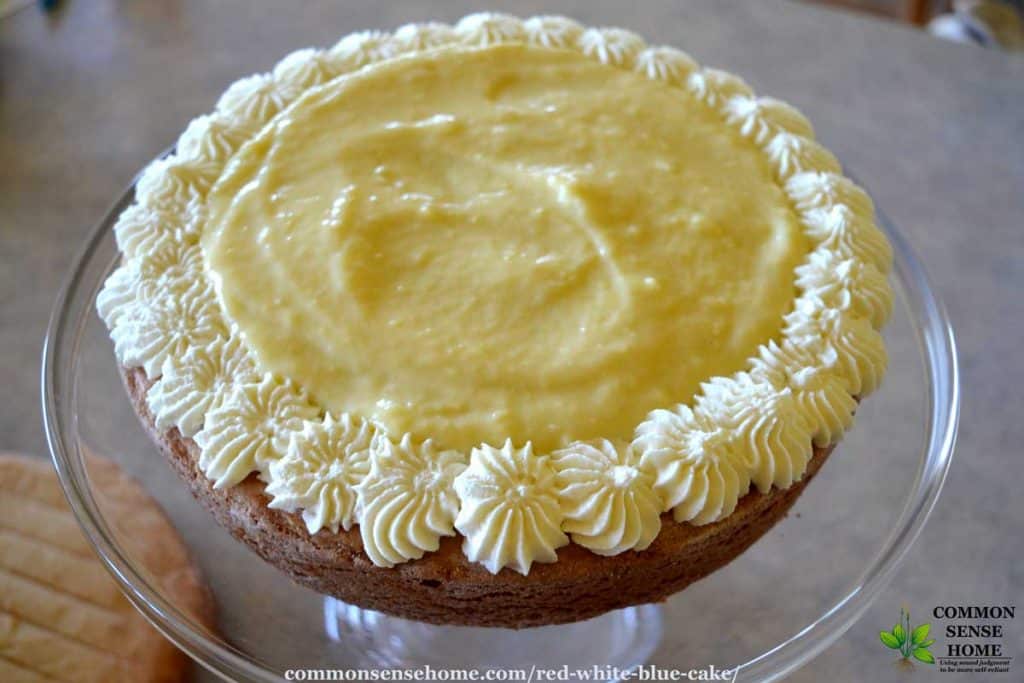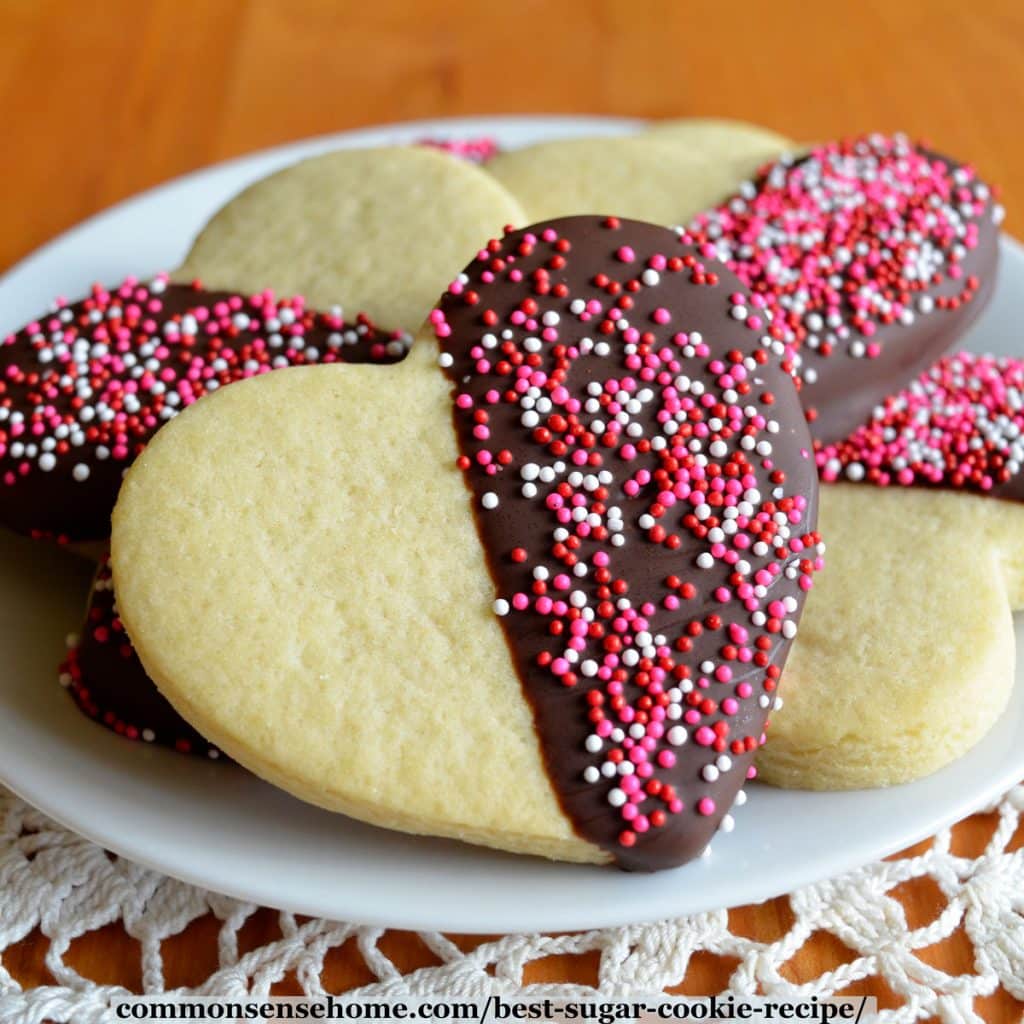12 Baking Tips Your Grandma Should Have Told You
This post may contain affiliate links. Read my full disclosure here.
Some people throw their hands up and say, “I can’t bake!”, but these simple baking tips and time savers may change your mind.
The primary goal in my kitchen is easy and tasty, with quality ingredients. A reader said I remind them of their grandmother, and I’m okay with that. Baking should be all about home and comfort.
I learned all about baking from my mom, who was Gram Irene to the grandkids and great-grandkids. Now I’m passing down those lessons to the next generation.
I’m breaking these baking tips into Pantry and Prep, While You’re Baking, and After Baking.
Good kitchen habits = good baking results.
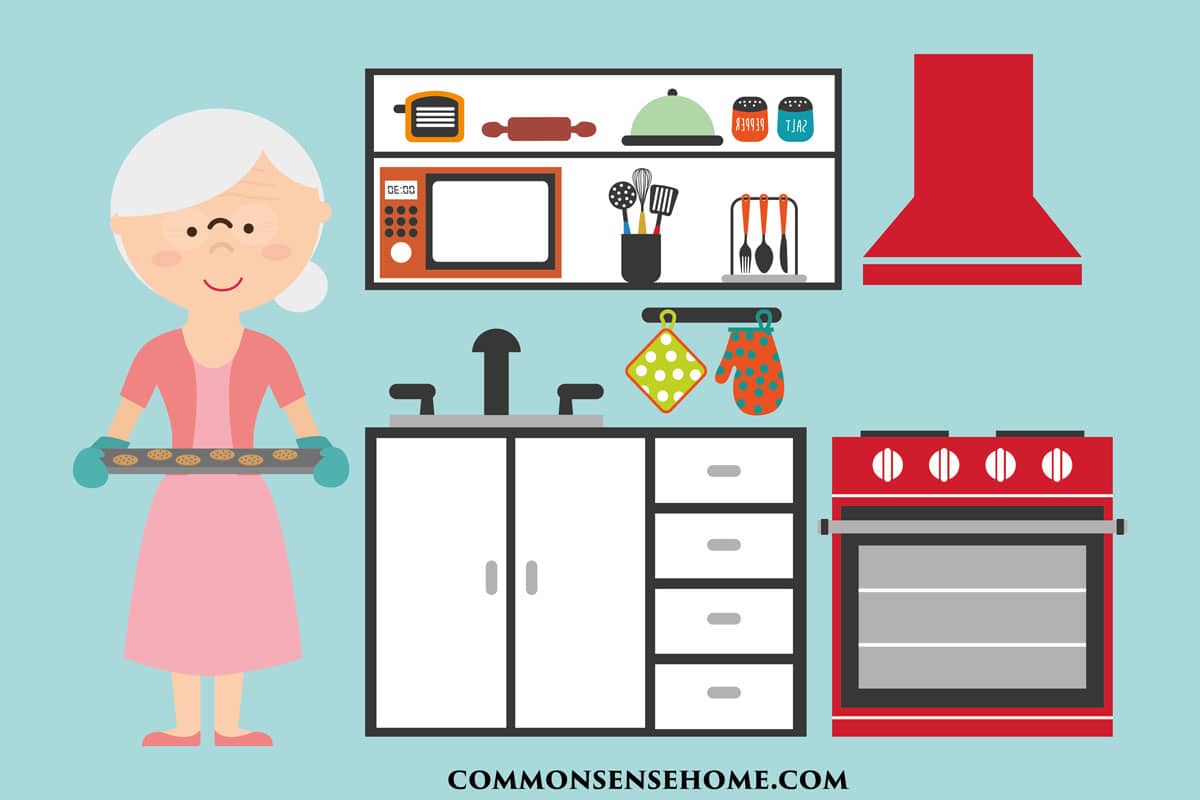
Pantry and Preparation Baking Tips
Stocking your pantry and choosing the right tools for the recipe are a big part of baking success.
1. Brands Matter
Different brands of ingredients perform differently in recipes. Find a simple recipe you like, like chocolate chip cookies, and experiment with different brands of baking ingredients.
Years ago when my kids were little, I bought some of the cheapest flour in the store to make salt dough. While I was out one Saturday afternoon, my husband tried to make cookies with the boys – and they flopped.
He of course found the cheap flour I’d stuffed in the back of the pantry instead of the one we actually baked with, and his cookies ran all over the pan.
Some of favorite flour brands include Great River Organic, King Arthur, and Heartland Mills Gold-n-White.
Sugar is also important in your baking recipes. I prefer cane sugar to beet sugar for more even browning. This is especially important if you’re baking meringues or brulee.
2. Freshness Matters
Ideally, you want to purchases or grow fresh spices each year. That 5 year old jar of ground cinnamon in the back of the cupboard is not going to add much zip to your baked goods.
Storing spices right next to the stove is a “no go”, too. Extended exposure to heat drives off a lot of the flavor.
Whole grain flours go bad faster than “white” flour. Nuts also go rancid over time. Purchase only what you need, or keep these items in the freezer for longer storage.
Leavening loses lifting power over time. Make sure to replace your baking powder and baking soda every six months or so.
Yeast is best stored in the refrigerator or freezer in an airtight container. If storing in the pantry, make sure to check the expiration date.
A friend called my mom to ask why her rolls didn’t raise. As they checked the ingredients, she found out that her yeast was years out of date.
3. Read the Whole Recipe Before You Start, and Prep Ingredients
I suspect many home cooks have ended up with recipe flops due to not reading the recipe all the way through.
Sometimes the ingredient list calls for an ingredient that gets divided and added at different times. Maybe you need softened butter, or time to chill before baking.
Read the recipe, and plan accordingly. Make sure you have all the needed ingredients, at the right temperature.
Speaking of temperatures…
Baking Tips for When You’re Ready to Mix and Bake
Temperature is important for your kitchen, your ingredients, and your oven.
4. Watch the Weather
When it’s hot and humid or cool and dry, recipes respond differently. Cool kitchen temps slow down yeast breads, excess heat may cause off flavors.
When it’s too humid, dry ingredients tend to clump and stick because they absorb moisture from the air.
Aim for kitchen temps between 66 and 77F, and adjust the moisture in recipes if needed to accommodate high humidity. Keep your dry ingredients stored in airtight containers.
5. Get Ingredients to the Right Temperature
If a recipe calls for room temperature butter or eggs, try to take your ingredients out of the refrigerator in advance. Softened butter, melted butter, and cold butter behave very differently in recipes.
When you’re creaming the butter and sugar, you want butter soft, but not liquid. For flaky pastries like pie crusts and scones, opt for cold butter.
Egg whites whip better at room temperature. Whipped cream whips better if the cream and bowl are chilled.
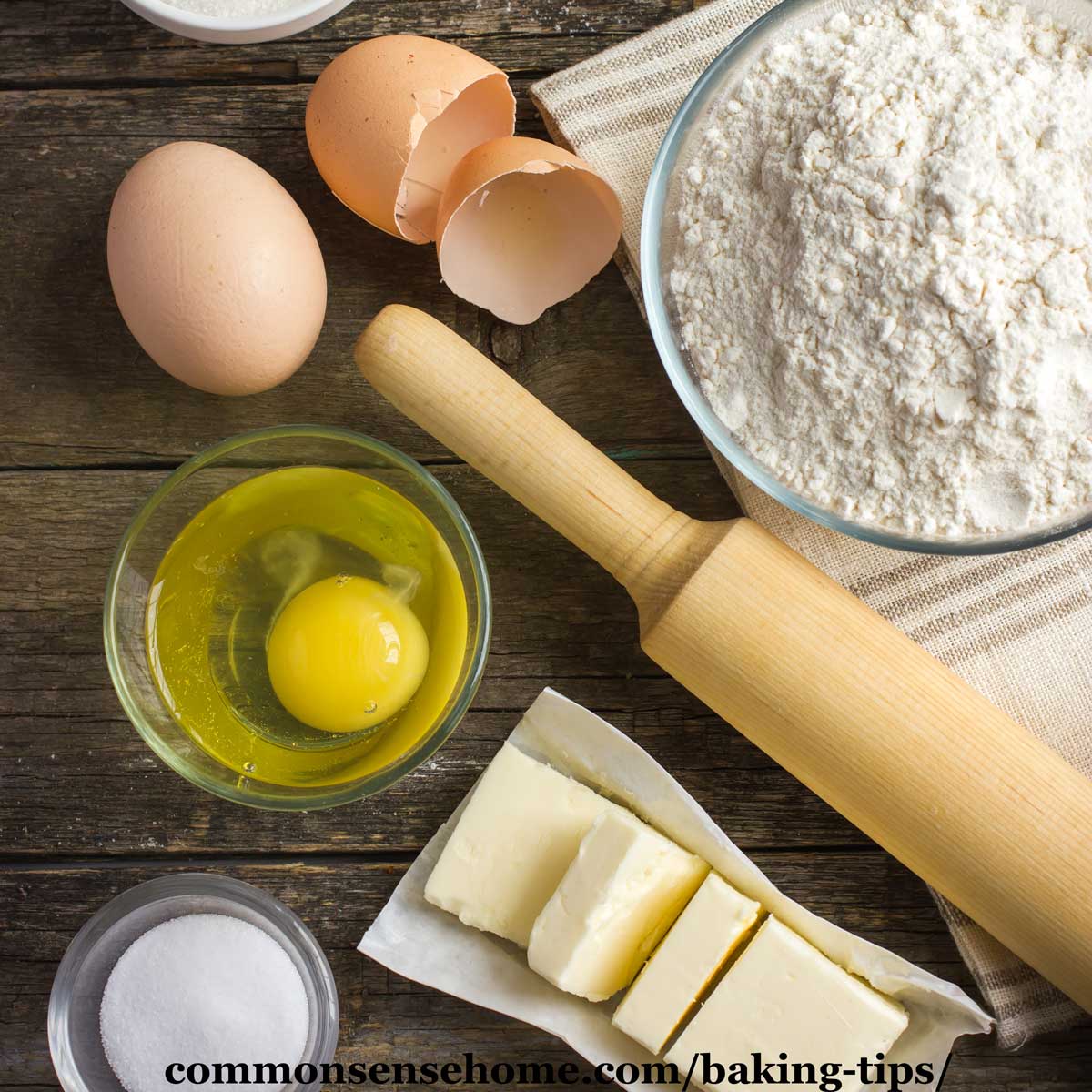
6. Check Your Oven Temperature
One of the simplest baking tips is to check your oven temperature. To do this, get an oven thermometer, and place it in the middle of your oven.
(You should always bake in the center of the oven, unless a recipe says otherwise.)
Would you like to save this?
Sometimes you can adjust your heating element, but it’s usually easier to adjust the temperature setting on the stove. Our old stove used to run hot, so I would set it 5 degrees lower than called for in a recipe with good results.
7. Measure and Mix the Right Way
Some bakers swear by weighing all their ingredients. That’s great, but not absolutely required.
What is needed is to measure fairly carefully. Use glass measuring cups with pour spouts for liquid.
Spoon dry ingredients into your measuring cup, and level with a butter knife. At the very least, don’t pack your flour into the measuring cup if you scoop. Too much flour equals dry baked goods.
Mix until blended, but don’t be overly aggressive. Take time to work your spatula or spoon around the bottom of the mixing bowl to incorporate all ingredients.
8. Parchment Paper is your friend
Instead of greasing my pans, I line them with parchment paper or reusable parchment paper. Parchment keeps cakes and cookies from sticking, but also helps with more even browning. (Get reusable parchment here.)
I do not like silicon baking mats. After being used for a while, they pick up odors. They also don’t brown baked goods as nicely as parchment does.
9. Watch Your Baking Time
A baking tip that my friend, Julie, shared from her brother, a professional baker, was to take cookies out of the oven before they look completely baked.
If you want a cookie with a soft center, it needs to come out of the oven when the edges are set, but the center is still gooey. The cookies will continue cooking for a short time from the residual heat, and set up once cooled.
Don’t overbake your layer cakes and bar cookies. If the recommended baking time is 30 minutes to 35 minutes, check at 30 minutes. You can always add more time, but you can’t take it off once the cake is baked.
When your cake is done, the edges should start to pull away from pan. The top should bounce back when you touch it, and test clean with a toothpick.
10. High Altitude Adjustments
As I explained in the Altitude Adjustments for Canning article, there’s less air pressure at higher altitudes.
For baking cakes above 3500 feet:
- Increase oven temperature from 350F to 375F.
- Increase liquid by 2 tablespoons for each cup used.
- Decrease sugar by one tablespoon per cup.
- Decrease each teaspoon of baking powder by 1/8 teaspoon.
After Baking Tips – Cooling, Decorating, Storage
If you cool your layer cakes upside down on the cooling rack, it will help to level out the layers.
11. Don’t rush to frost.
Make sure to cool before applying frosting! Whether it’s cakes, cupcakes or cinnamon rolls, trying to frost warm baked goods will make a mess.
To fill piping bags, I like to invert them in a large glass or mason jar. This keeps them stable while I scoop in the icing. (This works great for whipped cream and other fillings, too.)
12. How to Freeze Cookies and Cakes
Most cakes and cookies can be frozen. Back at the family catering business, we regularly froze cakes that we didn’t need immediately.
Baked goods are best used within 1-2 months.
To freeze an unfrosted cake – cool completely, then wrap tightly. Thaw at room temperature.
If you want to frost before freezing, flash freeze the frosted cake, uncovered, for 30-60 minutes. Once the icing is firm, wrap and return to freezer.
To use the cake, remove it from the freezer, unwrap, and thaw on the countertop for several hours.
When freezing cookies, I place sheets of waxed paper between the layers of cookies to keep them from sticking together. Most cookies freeze well.
Quick breads, like banana bread and zucchini bread, also freeze well. Cool completely and wrap tightly before freezing.
Our basic sandwich bread also freezes well, but crusty breads, like French bread, don’t. The crust gets chewy with long storage.
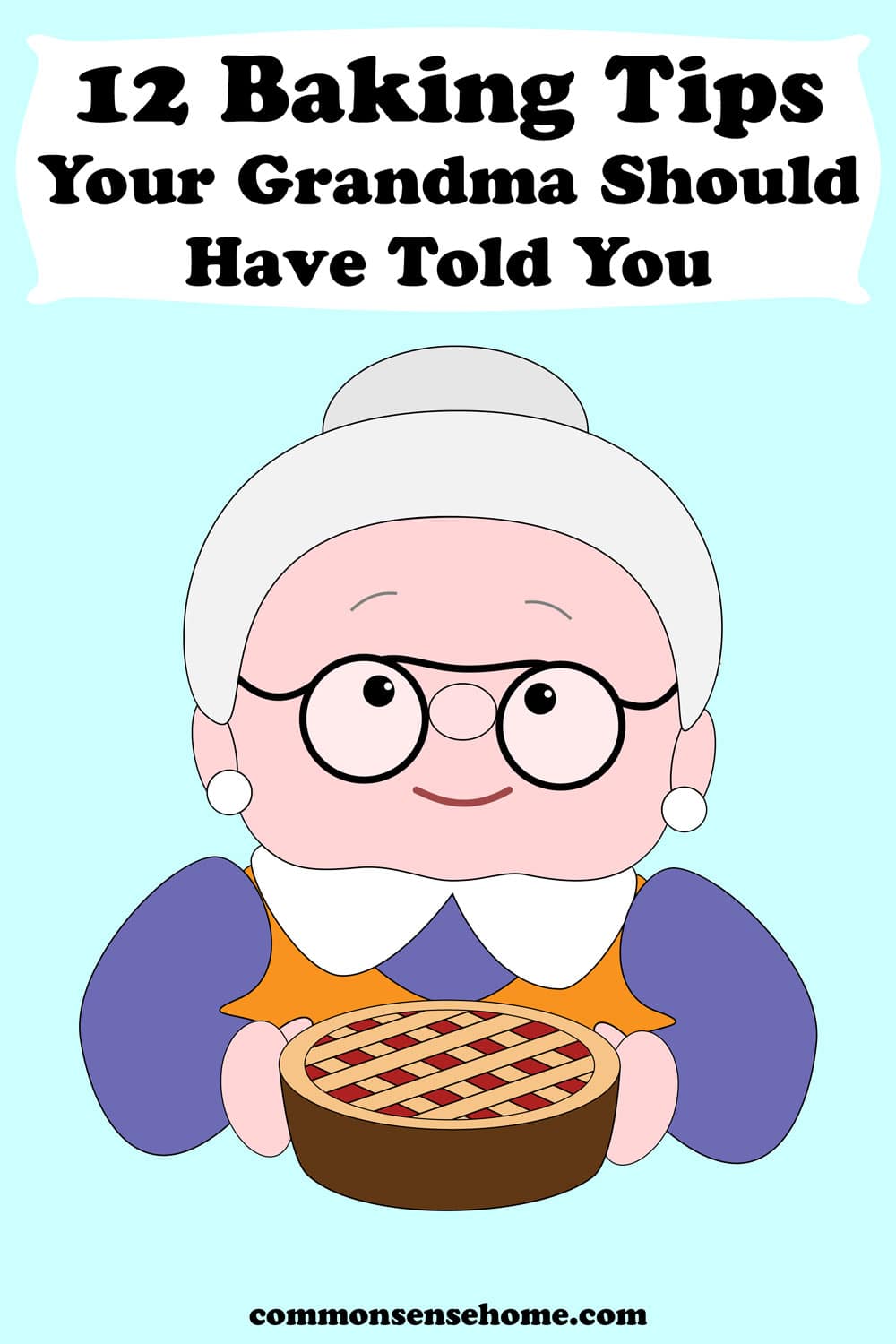
More Baking Tips and Handy Substitutions
We have over 100 recipes on the site, including a wide variety of baked goods. They’re all listed by category on the Recipes and Kitchen Tips page.
Many of our recipes also include troubleshooting tips for some of the most common questions and mistakes, such as:
The Best Sugar Cookie Recipe, Plus a Sugar Cookie Q & A
Cranberry Orange Bread Recipe (Plus Quick Bread Baking Tips)
Best Pie Crust Recipes Plus 10 Tips for Perfect Pies
To get all these tips – plus over 30 easy kitchen substitutions – bundled into a handy printable pdf, just sign up for the Common Sense Home mailing list below or on the Subscribe page.

